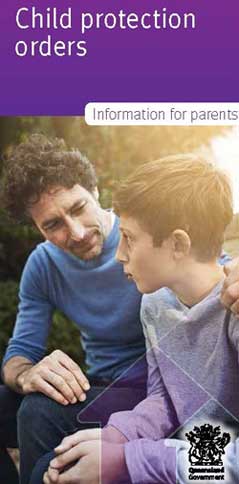Child Protection Order
All children belong in families who love them and keep them safe. If after talking to you and collecting information about your family situation the department assesses that your child is not safe at home, we’ll ask for a child protection order.
To do this, we talk to the Director of Child Protection Litigation. They’re an independent agency within the Department of Justice and Attorney-General that handles child protection legal matters.
The Director of Child Protection Litigation considers our information and decides whether to apply to the Childrens Court for a child protection order, and the type of order.
A child protection order is made by the Childrens Court if it believes a child is in need of protection. This means the magistrate agrees the child has been harmed or is at an unacceptable risk of harm. Usually, the magistrate will make a child protection order if they believe that:
- you can’t safely care for your child at home
- you aren’t willing and able to let us help you keep your child safe.
There are different types of child protection orders, depending on a family’s situation:
- Directive order — this requires you to do something to care for your child.
- Supervision order — this requires us to supervise your child’s care.
- Custody order — this requires us, or a family member, to be responsible for the day-to-day care of your child.
- Guardianship order — this requires us, a family member, or another person that the court thinks is suitable to be responsible for the day-to-day and long-term decisions about your child.
A child protection order can be:
- short — lasting up to 2 years
- long — lasting until the child turns 18 years old.
If the Director of Child Protection Litigation files an application for a child protection order, you’ll need to go to court. You should receive at least three days notice to prepare for your court date. You’ll also receive copies of the documents given to the magistrate, before the first court date. The magistrate won’t hear the application unless you’ve had time to talk to a lawyer. The magistrate may decide that a child protection order is not necessary. If this happens, we’ll continue working with you to keep your child safe. If the magistrate grants a child protection order, they will decide the type of order.
You’ll get a copy of the order, and we’ll explain what it means for you and your child. For short-term custody or guardianship orders, we’ll work with your family to help you make the changes you need to protect and care for your child.
The brochure has more information explaining child protection orders.
- Last reviewed
- 6 June 2018
- Last modified
- 3 August 2023
 This work is licensed under a Creative Commons Attribution 4.0 International (CC BY 4.0) licence
This work is licensed under a Creative Commons Attribution 4.0 International (CC BY 4.0) licence


